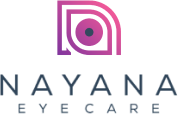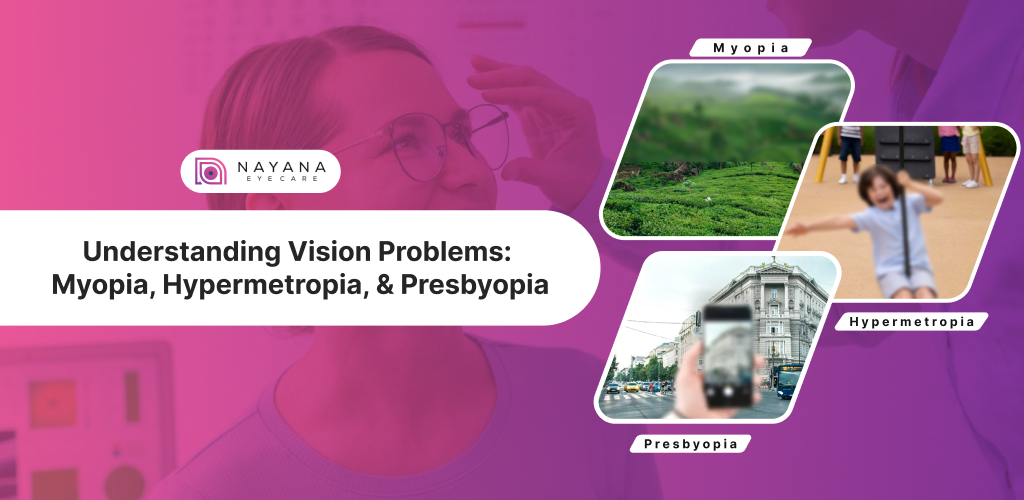Our eyes are powerful yet delicate, allowing us to view the world around us. However, over time or due to genetic factors, common vision problems like myopia, hypermetropia, and presbyopia can develop. Understanding these conditions helps us take better care of our eyes and make informed decisions. Let’s explore these three common vision problems in detail.
1. Myopia (Nearsightedness)
Myopia, or nearsightedness, occurs when nearby objects appear clear, but distant objects are blurry. This condition, commonly diagnosed during childhood or teenage years, arises when the eyeball is elongated, causing light to focus in front of the retina instead of directly on it.
Symptoms of Myopia
- Blurred vision for distant objects (e.g., road signs, whiteboards)
- Frequent squinting to see clearly
- Eye strain or headaches after focusing on far-off objects
Why Myopia Happens
Myopia’s development is often linked to genetic and lifestyle factors, like increased screen time or reading close-ups. Children and teens may be especially vulnerable.
Treatment Options
- Eyeglasses or Contact Lenses: Common solutions for managing nearsightedness.
- LASIK Surgery: Adults may consider LASIK for permanent correction by reshaping the cornea.
2. Hypermetropia (Farsightedness)
Hypermetropia, or farsightedness, allows clear vision for distant objects, while nearby objects appear blurry. Hypermetropia usually presents from birth and is due to a shorter-than-normal eyeball, which causes light to focus behind the retina.
Symptoms of Hypermetropia
- Blurry vision for reading or screen use
- Eye fatigue after extended close-up activities
- Headaches after focusing on near tasks
Why Hypermetropia Happens
Genetic factors contribute to hypermetropia. This condition typically doesn’t worsen with age, and many children with mild hypermetropia may “outgrow” it.
Treatment Options
- Eyeglasses or Contact Lenses: Prescribed lenses correct light focus on the retina.
- Refractive Surgery: LASIK and other refractive surgeries may help adults correct hypermetropia.
3. Presbyopia (Age-Related Farsightedness)
Presbyopia is a natural age-related vision change starting around age 40. With presbyopia, the eye’s lens loses flexibility, making close-up vision blurry.
Symptoms of Presbyopia
- Difficulty reading small text or seeing in low light
- Holding reading materials at arm’s length
- Eye strain or headaches during close-up tasks
Why Presbyopia Happens
As we age, the lens of the eye thickens and becomes less flexible, reducing the eye’s focusing ability.
Treatment Options
- Reading Glasses: An easy and common option for close-up work.
- Progressive or Bifocal Lenses: Offer multiple focal points for near and distance vision.
- Multifocal Contact Lenses or Surgery: Alternatives for those preferring not to use glasses.
Protecting Your Vision
Support your eye health with regular eye exams and limit screen time. A balanced diet, exercise, and hydration also promote healthy eyes.
Final Thoughts
Whether you experience myopia, hypermetropia, or presbyopia, these common conditions affect millions and have effective treatments. Regular eye exams are vital to maintaining vision clarity and eye comfort. Contact Us


